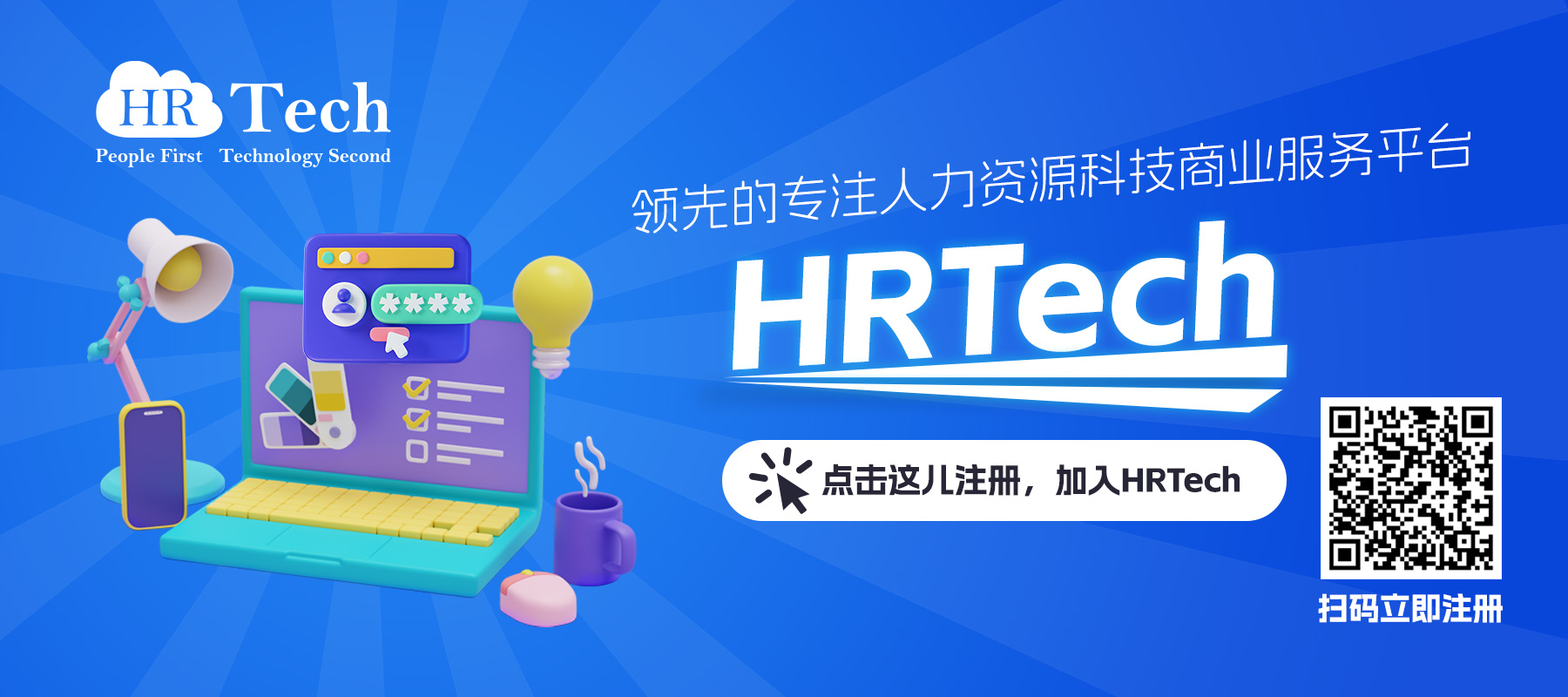人力资源管理
Beamery从Workday Ventures获得战略投资并加入Workday软件合作伙伴计划
Beamery,一个人才参与平台,宣布它已经收到了来自Workday Ventures的战略投资,并将加入Workday软件合作伙伴计划。此外,Beamery还宣布,Workday人才收购团队已经选择了Beamery的产品,这些产品有助于进一步确定处于早期阶段的被动候选人,并对Workday人力资本管理(HCM)形成补充,包括Beamery Talent客户关系管理(CRM)、Beamery Talent Marketing和Beamery Pages。
Beamery的使命是帮助企业重新定义吸引、聘用和留住顶尖人才的方式,帮助提供更好的人才获取体验。到目前为止,该公司已经筹集了4000万美元,在过去的12个月中,公司的年度经常性收入增长了300%,并赢得了大量的企业客户。Beamery的平台结合了人才CRM、人才营销、自动化合规和一个连接的集成层,使企业能够像获取客户一样进行招聘——从海外勘探和管道建设到有针对性的培养和参与。
Beamery的技术使公司能够通过部署诸如大规模数据挖掘、对每个候选人关系的360度观察和机器学习算法来确定哪个候选人最感兴趣,从而更好地培养顶尖候选人,从而做出更明智的招聘决策。
Beamery的首席执行官兼联合创始人Abakar Saidov说:“我们很高兴能以软件合作伙伴的身份加入Workday大家庭。”“Workday带来的行业专长,加上共享客户将从我们的合作中获益的产品整合,扩大了我们的地位,帮助企业重新定义与人才共事的方式。”
“在选择Beamery时,有两件事让我们印象深刻——一是针对早期被动求职者的专业技能,二是对Workday人力资源管理行业领先能力的补充和延伸的技术,”Workday全球人才招聘副总裁查尔斯•马(Charles Mah)表示。“这种合作关系有助于支持我们的人才网络战略,即通过了解求职者的兴趣和动机,建立更牢固的求职者关系,然后为他们提供合适的机会。”
“Beamery和Workday都致力于提供尖端的解决方案,使企业能够采取更具战略性的方式获取人才,”Workday Ventures高级副总裁、企业战略及董事总经理兼联席主管莉甘妮•利文塞勒(Leighanne Levensaler)表示。“通过合作,Workday和Beamery将能够帮助客户更有效地利用个性化体验吸引未来人才,从而吸引最优秀的候选人,帮助他们的企业在未来发展和竞争。”
以上为AI翻译,内容仅供参考。
原文链接:Beamery Receives Strategic Investment From Workday Ventures and Joins Workday Software Partner Program
人力资源管理
2019年聘用员工的7种方式
文/ RJ Horsley
今天的工作场所甚至与十年前都大不相同。为了成功地适应,企业应该参考这7种策略来提高员工敬业度,这可以提高员工保留率、绩效,甚至收入。
最近的研究表明,全球只有15%的员工能有效地投入工作。这是一个严重错失的商业机会。事实上,成功吸引员工的企业会使员工流动率降低65%,营收增长26%,业绩比其他企业高出202%,客户忠诚度比其他企业提高233%。模式很清楚:敬业的员工更快乐,表现更好,并为最终客户提供更好的体验。
吸引员工的第一个策略是为员工提供正确的工具和技术来有效地完成他们的工作。在美国,四分之三的工人他们的雇主在这方面不成功,40%的工人说他们因此辞职。另外58%的员工说,他们需要到其他地方工作来获得数字技能。
策略二是提供培训和鼓励学习。有效地做到这一点的公司的员工保留率比其他公司高30% - 50%。这也可以改善年轻员工的招聘和留住,86%的千禧一代表示,这将阻止他们离开目前的职位。
策略三是鼓励员工之间的社会联系。近90%的员工认为他们与同事的关系对他们的工作满意度至关重要。女性尤其认为,这是影响她们敬业度的一个重要因素:63%在工作中有最好朋友的女性订婚了,而在工作中没有最好朋友的女性中,这一比例仅为29%。
策略四是让高层领导以身作则。对高层领导的信任是创造积极员工敬业度的首要因素,比员工薪水更重要。58%的员工说,如果要为一位伟大的老板工作,他们会以较低的薪水开始工作。社会责任也是一个关键因素,85%的员工希望在有高度社会责任的公司工作更长时间。
策略五是关注员工。如果员工感到自己的担忧、建议和想法在工作场所得到了倾听,那么他们觉得自己有能力做好工作的可能性是其他人的4.6倍。
策略六是提供灵活的工作选择,82%的员工说这将提高他们的忠诚度。具体来说,员工提到了在家工作的能力。75%的员工说,他们在家里工作效率更高,因为他们能减少74%的同事打断他们的工作,减少71%的通勤压力,减少65%的办公室政治干扰。
策略七是庆祝员工的成就,并努力对员工表示赞赏。受到有限的认可和赞扬是人们离职的首要原因,79%的人辞职的理由是“缺乏欣赏”。与此同时,70%的员工表示,如果他们的经理能更多地简单地说声“谢谢”,他们的积极性和士气就会显著提高。
以上为AI翻译,内容仅供参考。
原文链接:7 Ways to Engage Your Employees in 2019
人力资源管理
Inova Payroll宣布收购One Source Payroll
据2月14日消息,薪酬和人力资源管理公司Inova Payroll宣布它收购了One Source Payroll——一家位于德克萨斯州欧文市的公司,该公司为全美300多家雇主提供薪资、时间和劳动力、人力资源和ACA合规服务。
“通过这次交易,我们不仅继续保持过去三年来我们在Inc. 5000名单上的稳定增长,而且我们还获得了一支成功的薪资和人力资源专业人员团队,他们提供与我们一致的服务水平。企业价值观,”Inova总裁兼首席执行官Farsheed Ferdowsi说。
One Source Payroll的所有者和联合创始人Shelly Mueller以及她已故的丈夫于2004年创立了公司,目标是花更多的时间与客户合作解决他们的工资和人力资源问题,并以合理的价格提供量身定制的解决方案,将它们与较大的国家供应商区分开来。
“对于我来说,找到一家在过去15年里一直致力于One Source Payroll服务的公司,这对我来说极为重要,”Mueller说。“Farsheed和Inova的团队已经证明他们非常关心他们的客户,我期待成为团队的一员。”
“除了服务和战略调整,我们两家公司从技术角度排列,”Ferdowsi说。“对于One Source员工和他们的客户来说,与Inova的整合将是相当无缝的,这是Shelly和我的首要目标。”
以上为AI翻译,内容仅供参考。
原文来源:Inova Payroll Acquires One Source Payroll
人力资源管理
Ultimate Software以110亿美元的现金交易私有化
据Ultimate Software2月4日官方宣布,Ultimate Software Group表示同意由Hellman&Friedman Capital Partners领导的投资集团以约110亿美元的价格收购。
该公司在声明中表示:根据协议条款,所有终极股东将在交易完成时持有每股Ultimate股票的331.50美元现金。在截至2019年2月1日的30个交易日内,此价格比Ultimate的成交量加权平均价格溢价约32%,并且比Ultimate的历史最高收盘价溢价。Ultimate的董事会一致批准了这项交易,并建议股东投票支持该交易。
交易完成后,Ultimate将继续在首席执行官Scott Scherr和现有高级管理团队的领导下运作。这家私营公司将由Hellman&Friedman领导的投资集团拥有,该投资集团将与重要投资者Blackstone,GIC和加拿大养老金计划投资委员会(CPPIB)以及其他投资者(包括JMI Equity)合作。
“该交易为我们的股东提供了大量溢价。我们的决定也是出于我们5,144名员工的最佳利益和超过5,600名客户的利益。这一变化将为我们的员工和客户带来有意义的利益,无论是长期还是短期。由于我们所有的员工在加入我们时都获得了Ultimate的股权,作为股东,这笔交易将为他们带来直接的财务上升空间。今天的公告还将允许我们对我们的产品和服务进行额外的,谨慎的投资,以更好地为我们的客户服务,”Ultimate的首席执行官、总裁兼创始人Scott Scherr说。
“我们的客户将受益于我们将新功能和服务更快地推向市场的能力,同时仍然享受与今天或更好的终极服务相同的高水平服务,以及我们产品的新创新。Hherman&Friedman完全符合我们为全球人力资源市场服务的愿景,同时保留了我们独特的公司文化和使命,”Scherr说。
近29年来,Ultimate一直专注于通过领先的人力资源和薪资管理解决方案帮助企业改善员工的体验,近年来,通过全面的人力资本管理套件,截至2018年底,Ultimate的总收入超过11亿美元,该公司目前为全球超过5,600家公司提供服务,云中有超过4800万人的记录。
交易完成后,Ultimate将继续在全球范围内开发、营销、交付和服务其人力资本管理和员工体验解决方案套件,包括人力资源、薪资管理、福利管理、人才获取、人才管理、员工管理、员工情绪分析和人力资源服务交付。
“Ultimate在人力资本管理领域的市场领导地位,以及公司令人印象深刻的增长记录,都建立在其软件的卓越品质及其充满活力和积极性的员工的基础之上。Hellman&Friedman的合伙人David Tunnell表示,公司深刻理解人力资本管理的本质,凭借其出色的使命驱动文化,获得了众多最佳工作场所奖项。“我们期待着与Ultimate的成功合作,与我们的投资合作伙伴:Blackstone,GIC,CPPIB和JMI Equity合作。”
Blackstone高级董事总经理Martin Brand补充道,“我们很高兴与Ultimate和这位投资者合作该集团将支持这家卓越公司的强劲增长和文化。”
该交易预计将于2019年中期完成,但须经股东批准和其他惯例成交条件(包括监管部门批准)。
分析师评论
作为在人力资源技术史上最大的交易之一,Ultimate Software同意以110亿美元的价格被一家私人股本集团收购。此举将使这家基于云计算的人力资本管理公司得以暂时摆脱华尔街的压力。
Constellation Research首席分析师穆勒(Holger Mueller)说,考虑到Ultimate似乎在蓬勃发展,并实现了稳定的同比增长,2月4日的声明令人意外。“通常情况下,私人股本投资者会收购陷入困境的公司或转型中的公司,但Ultimate做得非常好。”
这家成立29年的人力资本管理公司,提供包括工资、福利管理和人才获取在内的一系列工具,在160个国家拥有5000多名客户,在2018年实现了11亿美元的营收,高于2017年的9.4亿美元。它在中型企业中占据市场主导地位,并一直在扩大客户基础,以支持规模更大的全球企业,这使得它在与Workday、ADP和其他行业领军企业的竞争中越来越有竞争力。
现在的问题是这次收购将对公司的长期业务前景产生什么影响。
在170亿美元的人力资本管理和薪酬软件市场,Ultimate Software是仅次于Workday Inc.的增长第二快的软件供应商。
"我的直觉反应是,对于员工和客户来说,这可能是一个非常好的举措," LaRocque LLC创始人兼首席HCM市场分析师George LaRocque表示。他说,该公司已经以进行重大研发投资而闻名,现在它不会被迫向公众股东提供季度回报,它将有更多时间和空间专注于长期战略。
他也不希望有太多的摩擦。作为协议的一部分,几乎可以肯定的是,领导团队将至少在短期内留下来。
而且,由于该公司以员工为中心的企业文化而闻名,员工不太可能因为收购而逃离,即使是在兑现股票之后。股东将获得每股331.50美元,较当前股价有32%的溢价。
LaRocque称,"我们可能会在一两年内看到领导层的变动,但可以肯定的是,短期内不会有大的变动。"
曾领导这家私人股本集团的赫尔曼与弗里德曼公司(Hellman & Friedman)曾在2007年牵头以18亿美元将人力资源软件公司Kronos Inc.私有化,其创始人目前仍在运营这家公司。“它与Kronos的合作历史可能是Ultimate未来走向的一个标志,”LaRocque说。“公司运营良好,转型进展顺利。”
Mueller预测,客户可能还会留下来,部分原因是Ultimate具有吸引力的薪资工具。“人们总是在更换人才管理供应商,但没有人希望更换他们的薪资供应商,”他表示。“这使得它成为一种相对安全的投资。”
此外Mueller预计,Ultimate将利用此次收购来支持其持续的全球扩张。去年,该公司收购了总部位于法国的人力资源公司PeopleDoc,这在一定程度上推动了该公司的全球扩张。他说,扩大全球业务可以帮助该公司更快增长,并在三、四年内重新定位上市。
虽然人力资源技术领域的并购交易不断发生,但Mueller和LaRocque并不认为这是一种新的收购趋势。Mueller称,"没有其他像Ultimate这样有水准的公司能够私有化。"它的主要竞争对手之一Ceridian刚刚上市,ADP、甲骨文和SAP等公司规模太大,根本无法收购。
与此同时,Mueller鼓励当前和未来的客户关注Ultimate的路线图,以及收购后它计划在哪里投资研发资金。该公司以投资新开发项目而闻名,但这笔交易将如何影响这一趋势仍有待观察。
“知道你的供应商下一步要做什么总是一个好主意,”他说。这是判断他们今天所做的选择是否符合公司未来需求的最佳方式。
以上为AI翻译,内容仅供参考。
原文链接:Ultimate Software Announces Agreement to be Acquired by an Investor Group Led by Hellman & Friedman to Operate as a Privately Held Company
Ultimate Software Sells for $11 Billion
人力资源管理
人力资源趋势:2019年的5项人力资源创新
文/Courtney Moran
全球人力资源管理部门预计到2025年将达到300亿美元。换句话说,创造创新的人力资源解决方案的业务正在蓬勃发展。人力资源是一个由专业人士组成的行业,在管理每个员工生命周期的复杂过程中,他们历来负担过重。目前,人力资源行业正在经历着大量的创新。
越来越多的员工希望为公司工作,这些公司提供的不仅仅是公平的工资和通常的福利和津贴。他们希望成为一家多元化公司的一员,这家公司充斥着易于使用的解决方案,这些方案能提高他们的参与度,促进他们的健康,改善他们的工作生活体验。工作场所创新技术的增加反映了向更全面的员工体验的转变。
2019年五大人力资源趋势
所有员工参与
战胜无意识的偏见
改善基本人才培训
扩展我们的健康理念
通过AI简化人力资源运营
1.员工敬业度
预测: 企业将在2019年将员工敬业度增加45%。
员工敬业度是指员工对组织的情感联系、参与和承诺的程度。当员工感到被重视时,他们对工作、同事和公司的奉献精神和热情就会增长。这反过来又增加了员工的保留率、绩效和生产力。
研究一再表明,当员工敬业度低时,公司会受到影响。我们最近调查了人力资源和非人力资源员工,以了解员工敬业度。
我们想知道员工是否根据他们在公司中的角色对参与有不同的看法; 要么他们围绕参与计划做出决策(人力资源员工),要么他们在任何其他领域或部门(非人力资源部门员工)工作,对他们公司如何吸引他们的方式没有真正的发言权。
80%的受访人力资源员工发现,使用人力资源技术提高了员工对公司的态度。与此同时,57%的人力资源员工强烈认为,员工敬业度将有助于公司留住高效员工。总体接受调查的大多数员工认为,员工敬业度对企业文化的繁荣至关重要。当员工投入时,每个人都是赢家。
然而,公司内部的伙伴关系仍然存在脱节。人力资源专业人士声称提供了敬业度解决方案,但许多非人力资源员工仍然不相信他们的公司正在使用这些解决方案,或者他们会提供帮助。我们正处于一个转折点,普通员工希望参与其中,但对于软件如何提供帮助仍持怀疑态度。
人力资源部门、团队和人员负责监督和提供从招聘到离职的全面员工敬业度计划。人力资源人员将越来越多地求助于员工敬业度解决方案,以提高员工敬业度并增加员工保留率。挑战在于决定哪种解决方案最有利于他们的员工、公司和文化。
改善员工敬业度的方法有很多。人力资源人员可以使用员工敬业度软件,收集和跟踪员工的反馈,认可员工的成就,促进积极的活动。这些工具从员工反馈中获得可操作的见解,这对提高敬业度至关重要。
此外,除了员工敬业度软件之外,还有多种解决方案可以帮助员工敬业度。这些解决方案包括提供持续的培训和教育、职业发展、员工认可,以及围绕健康(身体、心理和财务)等主题创建项目。
企业和人力资源员工有很多提高员工敬业度的选择,我们预计企业将在2019年增加对这些解决方案的使用。
2.盲选招聘技术
预测:到2019年,公司将增加对技术的使用,以消除招聘过程中30%的无意识偏见。
对增加多样性以改善全公司绩效和工作场所文化的关注已经在上升。Harvey Nash的一项人力资源调查发现,企业正日益扩大多元化招聘目标,将重点放在性别、种族、文化、年龄和LGBT身份等方面。
然而,在整个简历筛选过程中,隐性或无意识的偏见仍然普遍存在。在最近的一项简历审核研究中,研究人员发现,在简历筛选过程中,种族歧视无处不在。
研究人员发现,名字“听起来像白人”的简历收到面试邀请的几率比名字为亚洲人的简历高75%,比带有“黑听”名字的相同简历高出50%。与此同时,拥有传统男性名字的简历比拥有“听起来女性化”名字的简历更有可能获得面试机会。
尽管这项研究本身受到了一些阻碍,因为它表明,种族和性别被锁定在预先选定的名字中,但它说明了在招聘过程中无意识的偏见可能会如何发挥作用。
我们都知道多元化组织表现得更好。麦肯锡公司(McKinsey & Company)最近的一份报告发现,职场中的性别和种族多样性与利润呈正相关。创造多元化劳动力的最大障碍是要认清自己的偏见,承认它的存在,并采取适当措施减少或更好地从招聘过程中消除这种偏见。
Eventbrite的首席执行官朱莉娅•哈茨(Julia Hartz)将在董事会中实现男女各占一半的比例作为个人目标。最近,他们在10人董事会中加入了倩碧全球品牌总裁简•兰黛(Jane Lauder),实现了性别平衡。哈茨最近告诉《财富》(Fortune)杂志:“自从我创建这家公司以来,我一直有一个强烈的愿望和承诺,那就是打造一个与世界接壤的团队。”
公司将越来越多地设定多元化目标,人力资源人员和招聘经理届时需要实现这些目标。要做到这一点,他们需要从设计实现性别、种族、文化和世代多样性的明确路线图开始。幸运的是,有越来越多的技术解决方案旨在帮助人力资源人员做到这一点。
为了减少招聘过程中性别歧视、种族主义、年龄歧视和阶级歧视的流行,人力资源人员可以实施各种招聘、应聘者筛选、面试和评估工具。今天,公司可以使用的这些解决方案的数量和种类越来越多。
这些解决方案提供了一系列特性,帮助公司实现人才多样化。有些公司提供多样性过滤器,以消除招聘过程中的无意识偏见和被动的候选人来源。例如,多样化的分析可以帮助企业理解并比较他们的公司在多样性方面与竞争对手的排名。此外,一些解决方案侧重于在简历扫描和面试过程中编辑信息,如性别、种族、民族或教育程度,而不是突出工作技能和经验。
人力资源人员将在2019年增加使用盲目招聘技术,以消除整个招聘过程中的无意识偏见。这些解决方案将扩大候选人范围,包括长期被排除在外的合格人才。
3.VR培训预防性骚扰
预测:2019年基于VR的性骚扰培训行业将增长15%。由于交互式、全身临其境的性骚扰培训的增加,性骚扰案件的数量将会减少。
在联邦一级,性骚扰被定义为任何不受欢迎的性行为、性要求或其他身体或语言上的不当行为。
尽管我们发现自己正处于#MeToo运动之中,但Leanin.org和麦肯锡公司的2018年职场女性研究报告披露反性骚扰运动进展甚微。统计数据令人痛心。目前,35%的女性在工作场所遭受过性骚扰。虽然98%的公司报告有性骚扰政策,但只有32%的女性认为不恰当的行为得到妥善解决。此外,73%的员工声称他们的经理不会质疑在工作场所使用不恰当的语言或行为。
本研究探讨全职员工在企业部门工作的经验。所以,这显然只是职场蛋糕上的一小块,并不能说明性骚扰在所有领域的全貌。美国平等就业机会委员会(Equal Employment Opportunity Commission)报告称,2017年针对性骚扰的诉讼增加了50%。
人力资源部门采用的性骚扰培训,以及管理人员和员工经历过的性骚扰培训,都不起作用。性骚扰培训历来都是面对面的,或者以计算机培训(CBT)的形式提供,包括文本、幻灯片和视频学习。这些训练方法实际上并不能减少性骚扰事件的发生,但是站在受害者的立场上走一英里可能会奏效。
我们都知道性骚扰培训很困难。VR将打破僵局。
Vantage Point VR培训公司的摩根•默瑟(Morgan Mercer)正在为这一突破性技术的开发设立标杆。这种完全沉浸式的训练增加了可预防技术的保留以及旁观者的干预。这个市场肯定会增长。自2018年4月以来,已有2000人完成了面向公众的beta测试,截至2018年8月,Vantage Point宣布了由Venture Reality基金牵头的130万美元种子基金。
到2020年,VR软硬件市场预计将达到404亿美元。根据IDC的数据,到2020年,预计将有超过10亿人定期使用VR。VR已经改善了许多行业;它已经在改善物理治疗,帮助自闭症谱系障碍(ASD)儿童克服社交障碍,推进外科训练,等等。VR注定会在家庭、学校和行业中无处不在。
虚拟现实软件是我们性骚扰问题的明显解决方案,这种技术的资金将不可避免地增加。随着VR性骚扰训练技术的进步,它们将很快超过标准的,过时的性骚扰训练模式。2019年将是它起飞的一年。
4.企业健康计划扩展
预测:2019年,除了身体健康解决方案外,专注于财务和精神健康的企业健康计划将扩大40%。公司将采用财务和心理健康解决方案,与身体健康解决方案一起工作,促进员工的健康。
根据最近的一项调查,只有35%的美国员工表示对2017年的财务状况表示满意。受调查的员工中有35%由于工作压力而每月缺席3-5天,另有85%的员工表示在工作中经历压力,他们认为工作场所为减轻压力所做的努力对穷人是公平的。投资于员工的福利是提高员工敬业度和促进健康职场文化的重要组成部分。
随着我们继续将精神健康视为一种必需品,而不仅仅是一种愉快的想法,企业的健康计划正在扩展,不再仅仅关注员工的身体健康。科技可以帮助公司改善他们的企业健康计划,包括财务和心理健康的解决方案。这些福利计划是为了提高员工的敬业度,为员工提供必要的支持,让他们成为最真实、最富有成效的自己。
超过一半的美国员工对自己的财务状况感到紧张,这种压力在过去一年里有所增加。例如,千禧一代是劳动人口最多的一代,他们背负着沉重的助学贷款债务。与此同时,夹在照顾孩子和年迈父母之间的“三明治一代”可谓捉襟见肘。
金融健康技术,也被称为finwelltech,为员工的财务健康提供解决方案,包括401ks、债务、储蓄、抵押贷款、收入、小额储蓄和投资。这项技术为希望管理财务的员工提供了一个全面的解决方案。从偿还学生贷款到帮助员工解决短期财务问题,雇主越来越多地提供金融教育、援助和解决方案。
为了提供全面的企业健康解决方案,企业将增加分配给健康的预算,专注于整合解决方案以改善员工访问,并采用数字解决方案。企业将专注于情绪健康计划,包括提供压力管理研讨会、提供冥想室,并专注于正念和工作与生活的融合。公司还可以选择使用健康应用程序来更好地促进并向所有员工提供这些解决方案。
这些解决方案不仅可以降低员工的工作倦怠,还可以为员工提供全面的健康解决方案,提高员工的整体健康水平。改善对企业健康的关注可以减少压力和倦怠,从而提高员工的工作效率和积极的组织文化。
幸福是构建积极、积极、包容的企业文化的重要基石,2019年企业健康计划将继续增长。
5.AI改善人力资源运营
预测:人工智能将驱动人力资源技术创新增长35%。
新工业革命是关于人工智能的——从我们的人工智能趋势报告中可以明显看出。公司越来越多地利用人工智能技术来帮助识别数据机会,改善内部工作流,提高生产率,等等。
人工智能嵌入人力资源技术也可以帮助企业改善员工体验。员工体验从候选人体验开始,AI从招聘到离职,提升了整个员工生命周期。人工智能可以帮助企业像对待忠实客户一样对待他们的候选人和员工。改善员工体验,提高员工敬业度,增强企业文化。
机器学习是人工智能的一种应用,它使用数据来学习、识别模式并做出决策。这些工具减少了快速有效地完成一项工作所需的人力;同时,它们增加了响应时间和获取信息的机会。
随着员工对雇主的要求越来越高,机器学习与人力资源技术的结合可谓恰逢其时。将所有这些人力资源趋势联系在一起的一条共同主线是人工智能。从吸引员工到对抗无意识偏见,再到拓展我们的“健康”概念——将人力资源工具嵌入机器学习即服务(MLaaS),简化了所有这些人力资源流程,从专业的盲选招聘解决方案到无处不在的ATS。
以我们2019年的盲选招聘为例。人工智能可以帮助消除招聘和面试过程中的无意识偏见。人工智能可以通过忽略诸如姓名、大学、地点和以前工作过的日期等信息来避免无意识的偏见。然而,这些系统仍然受制于以人为本的决策,因此需要不断的创新。当人工智能系统通过观察现有系统(和偏见)来学习时,它们有可能在招聘过程中继承和应用这些偏见。
同时,人力资源服务交付软件,例如,帮助组织和人力资源人员简化复杂的人力资源操作。这些解决方案通过规范人力资源人员提供服务和与员工互动的方式,将服务中心和服务台技术结合起来。人工智能可以学习常见问题并自动回复,从而减少人力资源人员审核和回复员工请求的时间。
此外,人工智能还被应用于求职者跟踪系统(ATS)中,该系统通常用于简化简历扫描过程。这些系统减少了人力资源人员和招聘人员在招聘和招聘过程中所需的时间。这些系统可以通过编程对最符合招聘条件的简历进行评分,现在也可以用来减少偏见。
人工智能驱动的技术将在整个人力资源部门继续改进和增长。随着对这些技术的需求扩大,未来一年将不缺乏新的创新。
人力资源趋势2019及以后
我们都知道,一个多样化的、敬业的、精神身体和经济上都健康的劳动力,将会给我们带来好处。使员工受益的人力资源解决方案正在增多,这个不断增长的市场包括促进员工敬业度的解决方案、多元化人才招聘、重新考虑性骚扰培训、扩大企业健康解决方案,以及利用人工智能来改善人力资源运营。
为了创造一个繁荣、高效、敬业的企业文化,企业需要招聘、聘用和留住顶尖人才。今天,这种才能无处不在。毕竟,这是一个候选人的市场,为了吸引和留住多样化和有竞争力的人才,企业将增加在人力资源解决方案上的支出,这将在2019年及以后把人力资源创新的多样性推向新的极致。
以上为AI翻译,内容仅供参考。
原文链接:HR Trends: 5 Major Human Resource Innovations in 2019
人力资源管理
2019年组织发展趋势:拥抱人力资源数据
富有洞察力的人力资源数据正在开始转变长期依赖人力劳动的流程,包括工资单,招聘和人力资本管理。
众所周知,数据已经改变了组织的业务方式。基于数据的应用程序和数据分析正在帮助销售,营销,产品开发和其他领域推动创新,消除低效率,改善客户体验管理并追逐以前难以想象的增长。
人力资源还可以使用数据做出明智的决策,帮助他们的组织取得成功。人力资源数据的见解已经开始改变长期依赖人力劳动的过程。薪资,招聘和人力资本管理只是人力资源部门的一部分,可以从细分的,细节丰富的数据中受益,例如,显示部门层面的信息或有关竞争组织如何发展的启示。
以下是三个不断发展的领域,人力资源数据可以帮助您的组织更好地管理人才并提高盈利,掌握这些趋势有助于为您的部门或组织成功。
使用数据作为助手
通过人工智能支持的技术收集、分类和分析的数据不应被视为人工劳动的结束,相反,AI应该充当人类的助手。从组织数据中收集的见解有望帮助人力资源领导者以新的方式处理他们的职责,并解决更适合人工智能的挥之不去的问题。通过这种方式,数据将越来越多地允许决策者专注于需要更人性化的优先级和任务。
例如,数据可以显示哪些员工有离职的风险,这使得人力资源部门能够与经理讨论潜在的结果,然后他们可以主动与员工交谈,以确定他们是否满足于工作。数据还可以揭示经理何时难以保留新员工。这可以帮助人力资源部门确定哪些经理可以从额外的培训中受益 - 甚至是体贴的,数据支持的对话。数据可以确定某个部门何时超出其分配的加班预算,使人力资源部门能够帮助管理人员更好地指导他们的计划。
与人员进行沟通正是人力资源部门应该做的事情,数据分析让人力资源部门能够采取有意义的见解。由于数据的原因,实现人力资源中的“人”元素可能比以往更加直观。
为管理层提供他们需要的数据
更加以数据为中心使人力资源部门能够积极主动地迎合另一个趋势:需要定期向高管和经理提供重要数据。管理层通常忙于运营组织,通常没有多少时间仔细审查数据,但通过将数据分析纳入其工作流程,人力资源部门可以隔离管理人员和一线管理人员需要看到的成就,问题和异常的统计快照。
通过我们的薪资服务提供的见解,今年我们的一个客户合作伙伴节省了330万美元,因为经理手头有数据表明加班超支已经成为一个问题。各地的人力资源工资专家肯定会让他们的主管,首席财务官和其他高管感到高兴,如果他们能够传递直接,准确的见解,导致任何不必要的开支被削减。
数据可以促进员工成长
人力资源和管理层之间的信息流动主题很好地转化为2019年的另一个趋势:更加注重改善员工与企业的关系。当人力资源部门有数据帮助员工提高绩效,学习新技能或在组织内寻求晋升时,人力资源部门不必仅依靠传闻。
在帮助那些对管理角色表示出兴趣的员工时,人力资源部门可以使用数据来概述当前管理者所遵循的具体职业轨迹。主管还可以依靠数据洞察力向员工展示他们需要获得或锐化的技能组合,以提高他们当前职位的绩效并为管理的未来做好准备。
成长型组织了解在员工发展中投入资源和时间的必要性。他们希望员工从他们的工作中学习并获得满足感。反过来,员工也渴望获得指导。当管理人员和人力资源部门明确指出员工可以采取的专业发展步骤时,员工会欣赏他们的上级重视个人发展。
开始使用人力资源数据促进创新,增长
致力于数据驱动的人力资源管理方法应该是您的组织2019年的首要任务之一。分析与您自己的组织相关的数据以及您的竞争对手的成功和失败可以使您的人力资源部门能够为您的公司推进关键目标。将其付诸实践应有助于为您提供时间,洞察力和信心,从而做出明智的业务决策并增强您与员工的关系。这是一个值得追求的目标。
以上为AI翻译,内容仅供参考。
原文链接:Embrace These HR Data Trends and Make 2019 a Year of Employee and Organizational Growth
人力资源管理
组织网络分析:数字化转型的缺口
“ 哈佛商业评论 ”(Harvard Business Review)的数据显示,自2000年以来,超过一半的财富500强企业“ 因数字化转型中断而破产,被收购或消失 ” 。在同一篇文章中,估计今天标准普尔500指数的四分之三将在10年内被取代,主要是由于数字化中断。没有哪个行业会成为例外。
听起来很吓人。
从好的方面来看,成功的数字化转型带来的回报非常丰富。例如,一项研究表明,成功进行数字化转型的公司比业界平均水平高出16个百分点。
因此,我们既有“棒”又有“胡萝卜”,使我们的公司成为数字化的。但根据麦肯锡全球研究院的行业数字化指数,数字化推动行业和公司的程度向我们表明,只有极少数公司实际上在数字转型方面走得很远。例如,美国仅占其数字潜力的18%,而欧洲则处于12%的更低水平。
那么,为什么没有更多的组织能够取得更大规模的数字化进展呢?
在我们深入挖掘之前,确定数字转换究竟是什么很重要。我个人的最爱来自Brian Solis,他是LinkedIn影响者,以其6个阶段的数字化转型而闻名。Solis将数字化转型定义为“技术,商业模式和流程的重新调整或新投资,为客户和员工创造新价值,并在不断变化的数字经济中更有效地竞争。”
虽然很强大,但这个定义涵盖了所有成分:新技术,新业务模型和流程,以及客户和员工的新价值。所有这些都旨在使组织在不断变化的数字经济中脱颖而出。
数字化转型有多难?
德勤2016年全球人力资本趋势发现,92%的高级管理人员和人力资源领导者认为他们的公司组织得不好。然而,只有14%的人认为他们的公司已准备好有效地进行重组。他们可能是正确的,因为业务转型只有 30%的机会成功。这个百分比已经有20多年的历史了,今天,根据福布斯的说法,这种可能性正在进一步缩小。
但这不是最糟糕的部分。
最糟糕的是,非常期望的数字化转型成功的机会最小。而不是整体业务转型已经令人畏惧的30%成功率,数字转型再次根据福布斯的说法,只有16%的机会获得成功。有这么多资源涌入其中(今年仅估计超过1.1万亿美元),并且数字化转型是众多公司的首要任务,每个CEO都应该思考:我只有16%的机会接受成功是否可以接受?
答案显然是“不!”。
但他们应该做些什么来增加这些荒谬的几率呢?
一项有趣的研究来自哈佛商学院的两位教授,Marco Iansiti和Karim Lakhani,他们与数字转型专家Robert Bock合作。在对来自制造业,包装消费品,金融服务和零售业等各行业的344家公司的研究中,他们发现,数字转型公司的前25%和最低25%之间存在显着差异。
他们观察到的数字运营的四大支柱之间的差异很明显:(1)客户互动和关系管理,(2)制造,产品和服务交付,(3)产品创建和交付,以及(4)人力资本管理和员工生产力。
在这四大支柱转型后,前25%的公司的毛利率,收益和净收入都比最低25%的公司好得多。他们的技术预算有何不同?没有。但有些事情阻止了所有其他公司产生这种结果。
最大的障碍
在LinkedIn上,每一分钟都有一篇关于数字转型的文章。但是这个庞大的从业者和各种学者的网络是否接近解决这个紧迫问题的解决方案?
似乎没有。
你通常会看到一些很好的部分解决方案。基于对如何进行数字转换的不同观点的提案,从所需技能到AI。例如,Gartner提供了一种很好的技能驱动方法,专注于CIO如何在他/她的公司中促进数字灵活性的发展。详细介绍了建立技能的方法。然而,我认为它是否会真正改变员工的心态,或者只是按照步骤让他们“勾选方框”,这可能是值得怀疑的。
至于人工智能,最有希望加速数字化转型的软件在上个月曝光。Laszlo Bock,谷歌的前CHRO,展示了他的公司Humu的旗舰产品 - 轻推引擎。该软件似乎是人类在时间上与适当行为作出反应时能够获得AI能力的最接近的方式,因为轻推引擎提醒所有员工实时地以理想/规定的方式行事(例如,感谢合作伙伴)做好工作的工人,或者在会议期间向安静的团队成员询问他/她的意见。
但是,这种方法与任何其他方法一样,如果将员工“ 推 ”给他们不喜欢或者实际上反对的行为,就会遇到挑战。当然,员工可能会做点推动引擎建议取悦他们的经理,但在更深层次上,如果他们的信念和价值观没有改变,真正的转变就不会发生。Tomayto - tomahto?一些员工会尽可能地绕过他们不相信的东西,因为他们是人类并且“没有AI会告诉他们如何表现。”
意识到任何类型的数字转型方法可能遇到的障碍,Gartner的研究副总裁Marcus Blosch警告说,要成为数字业务有6个障碍。他列出了各种因素,指出作为第一道屏障,所有其他作者在全面研究这一主题时都强调了这一点。它有不同的名称(主要是组织文化),但是所有的手指指向同一个方向,最大的障碍似乎是 - 人的方面。
虽然不能忽视其他障碍,但彼得德鲁克所说的“ 文化吃早餐策略 ” 是真实的。人们如何看待变革是决定性的,因为他们是必须以新的方式工作的人。因此,让德鲁克的主张更具可操作性,我们可以说公司在数字化转型中失败的主要原因是他们没有得到大多数员工的支持。
但是,如何让人们购买数字化转型呢?
寻找和激励影响者
众所周知,从个人经验来看,有些人比其他人更有影响力。关于这一点的好处是 - 正如几十年前已经证明的那样 - 你实际上可以衡量一个人在一个组织中有影响力的范围。用于此的方法称为组织网络分析(ONA)。
这种科学方法已经被许多研究人员和从业者在商业环境中严格测试了超过四分之一世纪。其中之一,通用汽车首席人才官迈克尔·D竞技场,在转型通用汽车方面发挥了关键作用。基于这一经验和其他经验,他今年夏天出版了一本关于通用汽车和其他公司如何利用ONA将自己从传统组织转变为敏捷组织的书。这本书基于长达十多年的研究,其中包括数十家大公司。这些公司的范围从汽车,航空航天,医疗保健和高科技公司到消费品和金融服务公司。
ONA可以以不同的方式使用。虽然Michael D. Arena主要使用它来创建所谓的自适应空间,但还有其他方法可以应用它。例如,虽然一些公司只是指定他们的变革推动者,带来了所带来的所有挑战(例如,不知道他们的实际范围,不透明,甚至造成坏血等),其他公司在科学上和事业证明了方式。
而这一切都有所不同。
例如,由世界上最伟大的网络科学家之一Albert-Laszlo Barabasi共同创立的ONA公司Maven7一直在帮助公司使用组织网络分析成功转型。在其他发现中,他们发现,平均而言,只有4%的影响者被ONA确定,您可以有效地覆盖约70%的员工。正如“哈佛商业评论”所强调的那样,超过50%的影响者通常不为管理层所知。通过在不使用ONA的情况下指定更改代理,您可以获得多少错过的范围。当您将影响者添加到他们达到的员工数量时,真正的魔力就会发生。包括他们在内,管理层可以让四分之三的员工站在他们一边。有时甚至更多。这足以严重加速数字化转型。
组织网络分析使管理层能够查看,规划和利用公司非正式网络的力量,使团队比以往更加紧密。Deloitte的Bersin也将ONA作为帮助建立团队网络的工具,这是当今最先进公司的主要管理杠杆。随着Network of Teams冠军成为谷歌,Facebook和亚马逊等公司,使用组织网络分析似乎是创建数字成熟文化的自然途径。
此外,Josh Bersin设想前面提到的微调引擎是与ONA结合的一个很好的工具。虽然对其巨大的潜力感到兴奋,但他指出,随着时间的推移,推动引擎将证明其价值,而组织网络分析已经有了坚实的商业基础。
ONA - 转型的人类幻灯片
一般来说,人们不喜欢改变。特别是在组织环境中。他们担心自己的薪水,正式或非正式身份,工作保障,能够应对变化等等。因此,当他们听到“数字化转型”这个词时,他们更可能是防御而不是开朗。
他们必须确信这对他们有好处。谁能比他们已经信任的同事更能说服他们?这就是组织网络分析的结果.ONA告诉您,您组织中最值得信赖的员工是谁,他们可以覆盖四分之三的员工,包括他们自己。
ONA有不同的方法,从简短的调查到跟踪公司通信的技术方面(电子邮件,电子日历,电话记录等)。如果您这样做,您将获得一群积极的员工,他们渴望与您合作,他们可以积极影响大多数其他员工接受数字化转型。
收集他们,为他们制定策略并仔细聆听他们的反馈。他们中的许多人将来自您的业务的前线,并确切地知道他们,其他员工和客户可能面临的挑战。影响者的伟大之处在于,您可以在数字化转型的任何阶段使用他们的反馈。
因此,我认为组织网络分析是数字转型难题的缺失部分。它可以帮助您解决Gartner提到的障碍,从员工抵制到增加部门间合作,到缩小人才缺口,所有这些都加速了变革。
如果我们将数字化转型设想为陡峭的下坡步行(考虑到风险,这是一个很好的比喻!),ONA可以为您提供滑动,以可控的方式加速您的进步。允许您的影响者帮助制定策略就像设置在幻灯片的顶部。他们可以看到你错过的一些细节,并通过激励其他员工在你面前移动障碍来清除你的道路。
通过这样做,他们会让你走得更快而不会遇到某些事情(例如员工阻力)。如果在某些时候遇到一些挑战并放慢速度,它们将帮助您调整策略并再次加速。如果你已经摔倒了,他们会建议下一步起床再去。
与其他员工一起工作,这些意见制造者将扩大您的信息。它们是可信的,它们将以您从未有过的方式触及其他员工的心灵和思想。这就是他们每天自然做的事情。他们将扩大您的影响力并帮助引导现场的转换过程,为您提供可以采取行动的实时反馈。它们是您可能获得的最佳帮助。那些“顾问”就在那里 - 在贵公司 - 等着你去咨询他们。
结论
Bock,Iansiti和Larkhani用一句话总结了他们关于数字化转型的论文:“为了做到这一点,领先的公司不仅投资于技术,还投资于开发,以网络为中心的能力和思维方式,以使该技术得到最佳利用。 ”
我们提到的那些前25%的公司可能会也可能不会使用组织网络分析。但ONA肯定有助于为员工提供支持,连接他们并帮助构建以网络为中心的能力和思维模式。本文开头的“哈佛商业评论”文章得出的结论是,数字化转型公司“是将转型视为一种生活方式的公司。
记住这一点,数字化转型是一条路,而不是目的地。只有当您的大多数员工接受数字化转型作为一种生活方式时,您的数字化转型才会成功。
以上为AI翻译,内容仅供参考。
原文链接:Organizational Network Analysis: The Missing Piece of Digital Transformation
相关阅读:
人力资本分析:组织网络分析和未来的工作
员工敬业度3.0:Humu启动微动引擎
谷歌首席人才官创立的神秘HR科技公司Humu周年总结
Josh Bersin谈2019年人力资源科技发展趋势
人力资源管理
改变人力资源的游戏:13种方法让绩效评估的压力降低
性能评估是一个经过提炼的过程——一个关键的快照,它反映了哪些目标已经实现,哪些目标还需要克服。尽管在管理者和员工之间的反馈交流中,绩效评估是必不可少的,但双方的人往往都害怕绩效评估。
那么,对于相关人员来说,如何才能降低绩效评估的压力,同时保持他们作为成功标志的角色呢?下面,福布斯人力资源委员会的13位成员分享了他们如何改变绩效评估的性质,以使每个人都受益。
1.保持简单
通过为每个经理创建工具包来简化流程。提供截止日期日历,样本审核报告和样本审核。如果可能的话,通过发送每周提醒和设置日历提醒来保持组织。另外,自动化!纸张很乏味; 系统更快,更直观。奖励:您还可以设置提醒,查看谁已经完成任务等等。——Michele Gonzalez-Pitek SHRM-SCP, Pitek Consulting
2.建立对话文化
人力资源部门可以而且应该通过提升绩效管理流程并确保每个人都清晰,引领潮流。关于绩效管理存在很多争论,但就像工作场所的许多试验一样,沟通至关重要。创建一个对话。——John Sigmon,johnsigmon.com
3.使它有意义
如果这是一件苦差事,领导者会觉得这是一件苦差事。所以,不要把它做成一件苦差事。拥有一个系统可以尽可能多地自动完成工作,并且不会限制它。创建一种绩效评估是日常活动的文化。无论是积极的还是批评的,都会立即给予反馈。确保以富有成效的方式提供关键反馈。——Lotus Yon,NCH
4.创建连续性
反馈应该是全年持续的,人力资源部门应该鼓励不断循环的记录反馈,然后管理人员可以使用和分享参考。人力资源部门可以通过提供明确的时间表简化流程,促进与管理人员的审核会议,提供有关组织期望的指导,审核流程和程序以及安排可用时间。——Meg Battle, Rabin Martin
5.向前看,不向后看
当绩效评估一次性评估一年的员工工作价值时,可能会出现问题。相反,管理者应该专注于为即将到来的一年中的员工设定可衡量的目标,然后定期与他们会面以确保他们在实现每个目标方面取得进展。这将审核从无所不包的年度评估更改为许多目标更新之一。——John Feldmann, Insperity
6.投资技术,不要撇开对话
经常登记入住的评论已经成为常态。我们每季度进行一次,并将其称为“连接会话”。使用高效,简化的软件(如人力资本管理工具)来支持流程至关重要。当定期传达反馈时,文档本质上是精益的。重要的是记录要点,但不要浏览对话。——Stacey Browning, Paycor
7.不要等到年度审核时间
大多数绩效评估都不受欢迎,因为管理层和团队成员都不会在今年年底之前就性能,奖金,加薪等问题进行沟通。如果一年四季都在进行一致的沟通,比如四分之一,那么很有可能不会有任何意外,年终审查会相当简单。——Evan Lassiter, Cloudreach
8.拥抱科学
通过对反馈神经科学的广泛理解,人力资源专业人员可以进行有意义的性能对话,感觉安全,而不是压力。首先要专注于什么工作。然后,确定利用特定现有优势的新行为和实践方法。为了减少对审核的威胁响应,这些对话应该经常进行。——Kelly Lum, Highgate
9.让绩效评估成为一种积极的体验
如果经理将评论更多地放在对话中并询问开放式问题,那么员工将有机会提供有价值的反馈。经理应该听。这是员工突出自己的成就,对自己的成就感到满意并分享新想法的机会。它也可以是设定新目标或讨论改进领域的时候。——Debi Bliazis, Champions School of Real Estate
10.与薪酬决定分开
最关键的一步是将绩效评估与加薪和晋升分开,以防止游戏化。如果员工知道在审核期间他们正在考虑晋升,他们可能会阻碍可能导致改善和增长的关键反馈。此外,使评论更短,更频繁和更热门,以便它们具有意义和可操作性。——Ben Peterson,BambooHR
11.坐在办公桌的另一边
作为一名经理,只需问问你的员工,“你想在明年完成什么,我该如何帮助?”这个问题开始了一个对话而不是一个片面的讲座。它将评估转变为头脑,并讨论增长和发展,而不是判断和评级。除了人力资源部门的需求,员工的成长不是我们真正想要的吗?——Michele Markey,SkillPath
12.改变你的心态
对我而言,这完全取决于你如何看待它。如果你认为它们是消极的,那么猜猜是什么,这是一种消极的体验。但是如果你选择专注于积极因素,那么它就会产生积极的影响。我不是说要完全忽视消极方面; 你必须尊重并找到对付它的方法。但对于普通员工而言,您所宣传的是您所获得的。——Adam Mellor, ONE Gas, Inc.
13.提供实时反馈
对任何人的反馈最好是温暖的。这包括尽可能地立即关注反馈的影响。稳健的一对一节奏是高增长公司庆祝胜利和快速解决问题的关键。两者都对激励积极的关系,激励行为和纠正问题至关重要。——Stacie Mallen, CampusLogic
以上为AI翻译,内容仅供参考。
原文链接:Changing The HR Game: 13 Ways To Make Performance Reviews Less Stressful
人力资源管理
Josh Bersin谈2019年人力资源科技发展趋势
文/Lesley Arens 译/杨喆
人力资源技术市场正在飞速变化,人们开始关注生产率、员工体验、福利以及人工智能的无限潜力。在Unleash18的第一个演讲中,Josh Bersin分享了观点,并强调了下一年的大趋势。
以下是世界知名的行业分析师和德勤会计师事务所的创始人Josh Bersin的分享:
从自动化到生产力的巨大转变
多年来,Bersin举办的Unleash大会关注于人力资源技术自动化和人力资源实践的结合,并涉及各个方面:工资发放、学习管理、绩效评估、薪酬……尽管这些让多数公司夜不能寐,但如今的商业热点就是生产力。
为什么?
因为今天我们在灵活、网络化,且以团队为中心的组织中工作,有太多的事情压得人们无法喘息。所以下一个挑战是:建立能够提高生产力,帮助人们、特别是团队完成工作的人力资源软件。
从人力资本管理、人才管理到人力资源管理,时代的主题不断在改变:20世纪90年代至21世纪初是自动化和实践驱动的解决方案;2004年至2012年是一体化;2012年至2017年是文化、环境、领导力和契合度;今天的主题则是绩效和团队。
Bersin宣称在经过九年的经济增长后,人力资源技术现在的状况仍旧窘迫:所有的工作都或多或少的被技术影响,但奇怪的是,尽管现在工作的更久,也有了更多的工具,但是即使是发达国家,生产力依旧持续滞后。
这会造成什么?
首先,员工会很疲惫,他们不停的处理电子邮件,整天与不同时区的同事开会(已经有一些公司正在改变政策,鼓励人们早晚去健身房)。数字化转型是围绕着人的,是聚焦于客户的,而不仅仅是关于技术。这也解释了为什么员工敬业度滞后了,因为在工作中,人们更多关注的是“把事情做完”,实际上工作效率和敬业度之间有着非常明显的联系。
其次是信任问题,这影响到绩效以及员工对雇主的期望,即使在技术型企业里,也存在着巨大的信任危机。
人力资源技术对企业而言至关重要
在人力资源技术上的投资是惊人的,有大量的供应商(Josh Bersin称约有1600家甚至更多),和许多大公司都致力于开发人力资源技术,来帮助人们完成工作,其中有微软、linkedIn、Facebook、IBM、谷歌、亚马逊、cornerstone、SAP……
比如LinkedIn发布了ATS Talent hub和一套人工智能招聘工具,可以在职位发布时就能预估到,会有多少人申请这份工作。现在的人力资源科技市场十分复杂,有众多因素交互影响,一场争夺最佳用户体验的战争正在进行。
招聘是人力资源领域最大的市场
在这场激烈的人才、雇主品牌、战略资源争夺战中,企业往往会投入大量资金。许多招聘正在通过聊天机器人变得更自动化,而技能型职位的招聘正在因为开源工具、复杂的候选人追踪系统(现在称为招聘管理系统)和更匹配的评估,而发生革命性变化。
当前领域的变化延长了人才发展周期,并创造出一系列基于人工智能的新型智能人才应用。与此同时,招聘问题正成为一个发展问题:由于人才缺乏,企业需要与竞争对手争夺员工,人才市场压力重重,退休员工也重新回归职场。
人工智能时代已经到来
人工智能可以帮助人们做其想做,但力不能及的事情。
例如,Xander分析员工情绪:为员工提供工具,使企业明确员工信息并有效的响应;通过热量地图监测影响留存率的因素;基于结果提供反馈,使企业有意识的进行改善行动;以此来帮助公司提高员工满意度、绩效和留存率。
或者Compass,它是一种新的人工智能驱动的态势感知工具。但需要注意的是:如果你的人才战略并非为了吸引多样化的候选人而设定,那么人工智能也会如此。这就是为什么最近亚马逊关闭了它的人工智能招聘系统:这个工具在一定程度上歧视女性。
再比如Glint,它引入了AI-for-HR的智能警报,实时预测风险型员工的商业影响。
还有 Laszlo Bock(前谷歌人力资源专家)的新创企业humu:将机器学习和科学“有感情”的进行结合。
人力资源技术与福利工具将是下一个引爆点
首先,因为我们需要工具来提高生产力,减少认知过载。其次,人们还需要一些工具来帮助他们改善健康、保持专注,福利已经从健康问题变成了生产力问题。
我们进入了一个重视员工体验的新世界,因为每个雇主都想让员工的生活更美好。为了吸引员工的眼球,这场争夺产生了一种新型的人力资源技术架构——并创造出一些新事物,让人们更容易获得他们所需要的东西。
原文链接:#Wrap-Up Unleash18: HR Technology 2019: Disruptions Ahead
人力资源管理
基于云端的人力资源系统将会越来越好
文/Sarah Fister Gale
现如今,大量公司将其核心系统接入云端,人力资源部门也不例外。
云端的灵活性意味着技术团队可以快速无缝地提供新功能和交互。基于云的人力资源系统也意味着供应商可以更快地实现新的迭代,并且减少麻烦。
普华永道亚特兰大首席人力资源技术负责人Dan Staley表示,这对客户来说是个好消息。“供应商过去常常每隔一到两年推出一次升级,现在它们每季都推出一次。”这为用户提供便利,用户可以即刻访问最新功能,并允许供应商增加其功能。
这使他们能够加快路线图的时间表,并使大型供应商更容易获得同类最佳小公司,并将它们集成到其工具套件中。“我们希望看到供应商能够更快地加强产品能力”他预测道。这包括嵌入更多社交和协作功能以及添加新报告和仪表板。它还允许他们整合多个来源的数据,以支持劳动力分析——这是生成实际业务价值的地方。
人力资源管理系统供应商长期以来一直承诺进行预测分析,没有太大的进展。德勤咨询有限责任公司Bersin解决方案提供商研究副总裁Christa Manning说,这可能很快就会改变。“大多数平台正在试验机器学习,以从他们拥有的大量员工数据中获得有意义的见解。”
大数据的重要一年
虽然真正的劳动力管理预测分析仍然是一个梦想,但包括Workday,Visier,Vista,IBM Watson和SAP Successfactors在内的多家供应商现在都提供了一些数据分析功能。这些工具有望提供一系列见解,例如公司是否满足多元化目标,面临周转风险,以及培训职业发展建议。
大部分供应商正在利用存储在公共云中的庞大数据库来磨练系统。公共云拥有大量的劳动力数据,这对于创建有用的算法至关重要,而算法又是计算机用来分析数据的一组规则。“需要对大型数据集进行算法训练,以了解哪些信息是相关的,”Manning指出。“他们从每次交流中学习,并随着时间的推移变得更好。”
Staley预测,由于这些算法能够利用更多数据集,因此能够提供更有针对性的见解。例如,想象一个单一的系统可以查看员工的加班日志表,旅行支出和他们的LinkedIn行为,以确定哪些过度工作的员工最有可能退出——然后提供人力资源建议,告诉他们可以做些什么来让他们留下来。“使用预测分析有很多可能性,以确保你的最佳人才不会离开,”他说。
加利福尼亚州普莱森顿市Workday HCM产品副总裁Cristina Goldt表示,人力资源管理系统中的分析工具也将在管理工作人员方面发挥作用,它可以查看有关所有类型的工人和项目的数据,帮助公司更好地分析何时何地雇用承包商与全职员工,选择谁以及如何支付他们。“他们可以将技能与不同的角色相匹配,并使他们的招聘系统更有效率,”她说。
包括Workday在内的一些供应商也为客户提供了将他们的数据洞察与行业标准进行比较的能力,以了解他们的立场。“这使得他们可以与同行进行比较,”Goldt说。
我们准备好了吗?
所有这些场景都很诱人,尽管这些时候商业领袖仍然可以通过粗略地浏览分析仪表板来预测员工趋势,Goldt表示,与推出并准备使用的其他软件不同,机器学习需要时间和培训,并且需要使用相关数据访问链接数据库。“它被称为机器学习是有原因的。”
客户对于如何在自己的组织中应用分析仍然有些不确定。Manning说,部分原因在于缺乏有意义的案例研究。“每个供应商都在谈论人力资源的机器学习,但目前还没有很多例子。”
对于那些听过供应商吹捧劳动力分析强大“魔法”的pitches的公司,她敦促他们“要求实时客户参考”和现实世界的例子来证明其他公司正在做什么,他们是如何做到的以及他们看到了什么结果。“培训算法需要与了解技术的供应商建立强有力的合作伙伴关系,以及如何提供可操作的信息,”她说。这种转变需要时间,因此选择一个值得信赖的供应商非常重要。
以上为AI翻译,观点仅供参考。
原文链接:Sector Report: Cloud-Based HR Systems Make Everything Better
扫一扫 加微信
hrtechchina
 人力资源管理
人力资源管理
 人力资源管理
人力资源管理
 人力资源管理
人力资源管理
 人力资源管理
人力资源管理
 人力资源管理
人力资源管理
 人力资源管理
人力资源管理
 人力资源管理
人力资源管理
 人力资源管理
人力资源管理
 人力资源管理
人力资源管理
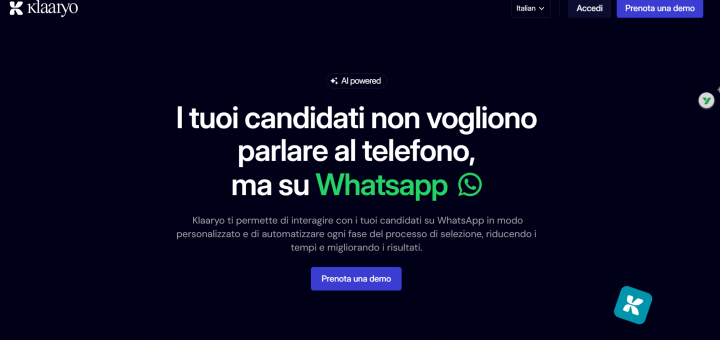
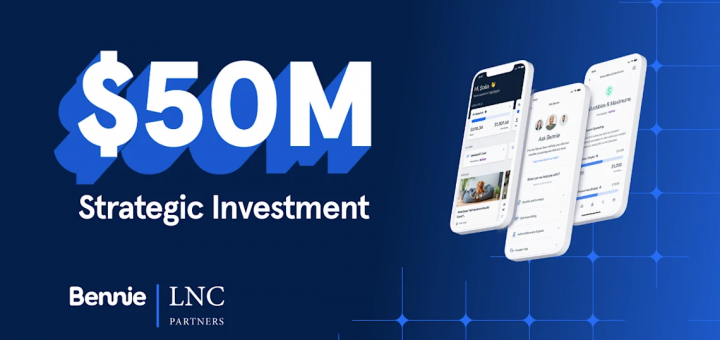
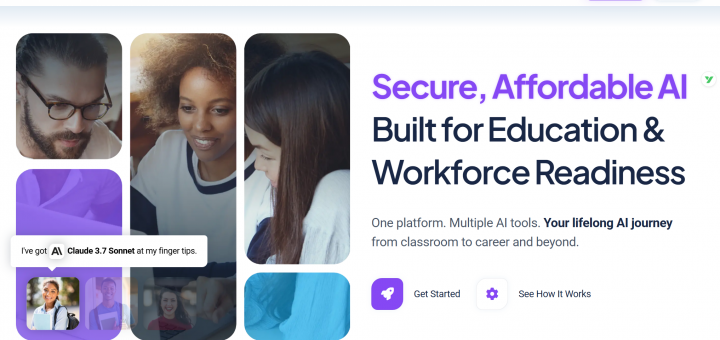

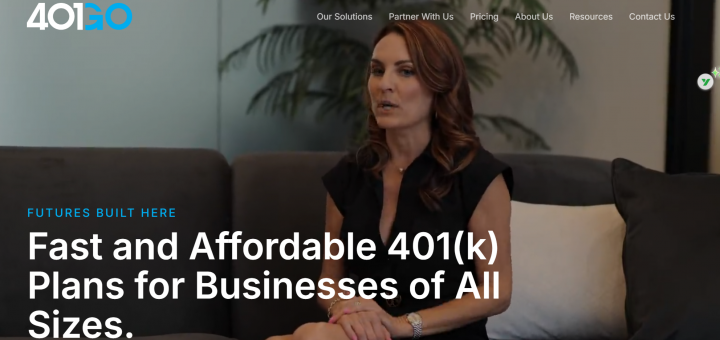
 扫一扫 加微信
hrtechchina
扫一扫 加微信
hrtechchina




